Abstract
The lymph node cells of mice painted with contact sensitizing agents immunize recipient mice when injected into their footpads. In practice 2 × 106 nylon wool purified T cells are used from mice painted with picryl chloride or oxazolone (4-ethoxymethylene-2-phenyloxazolone). The ability of cells taken 4 days after painting to immunize other mice was abolished by treatment with rabbit complement but cells taken at 1 day were unaffected. This effect of rabbit complement was due to IgM anti-hapten antibody on the surface of antigen-presenting cells. The antibody could be eluted from the cells with appropriate picryl or oxazolone-ε-aminocaproic acid. It adhered to insolubilized anti-IgM and behaved like IgM on gel filtration. To confirm the role of this antibody, mice were rendered unresponsive with picrylated pneumococcal polysaccharide type III before being painted. This abolishes antibody production but leaves contact sensitivity intact. The lymph node cells of animals treated in this way were unaffected by rabbit complement and this suggested that antibody was required for this phenomenon. Moreover although lymph nodes normally lose the ability to immunize at day 6 after painting, the lymph node cells of unresponsive mice, which fail to make antibody immunize other mice up to day 8 after painting. This effect of unresponsiveness is reversed by the injection of serum taken 8 days after painting. It was concluded that IgM antibody which appears on the surface of lymph nodes 4 days after painting depresses their ability to immunize other mice.
Full text
PDF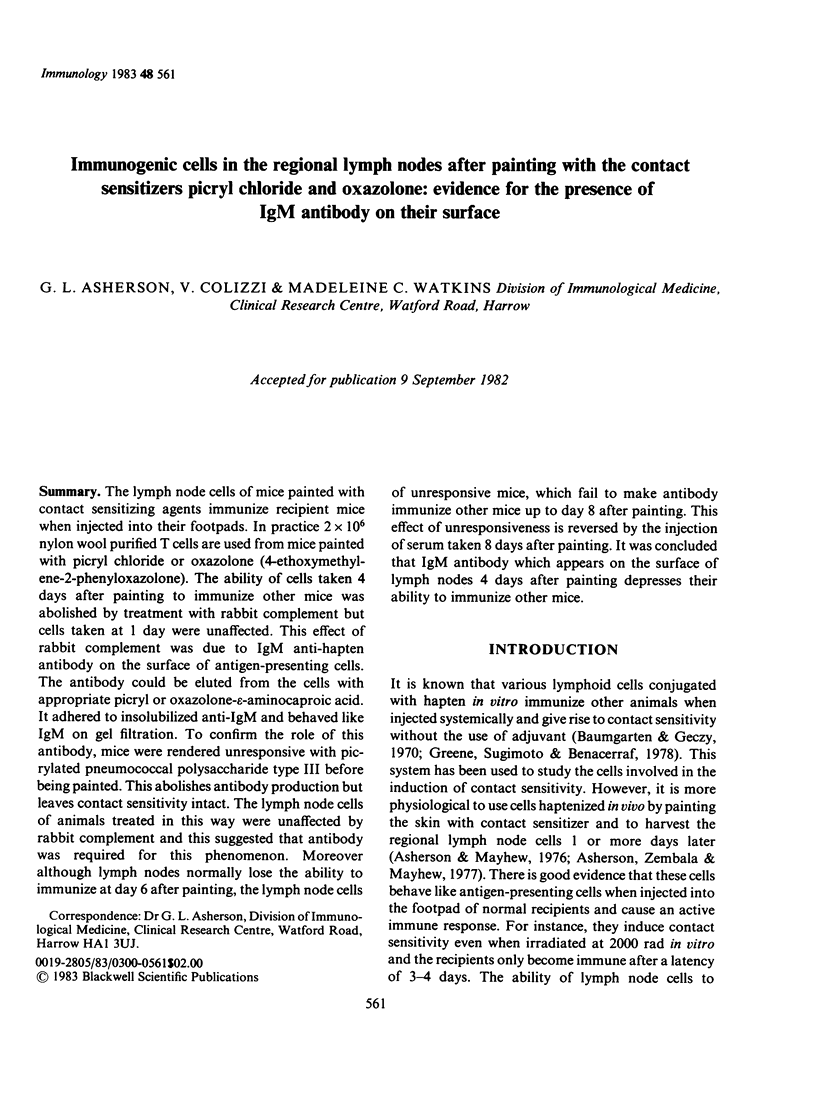
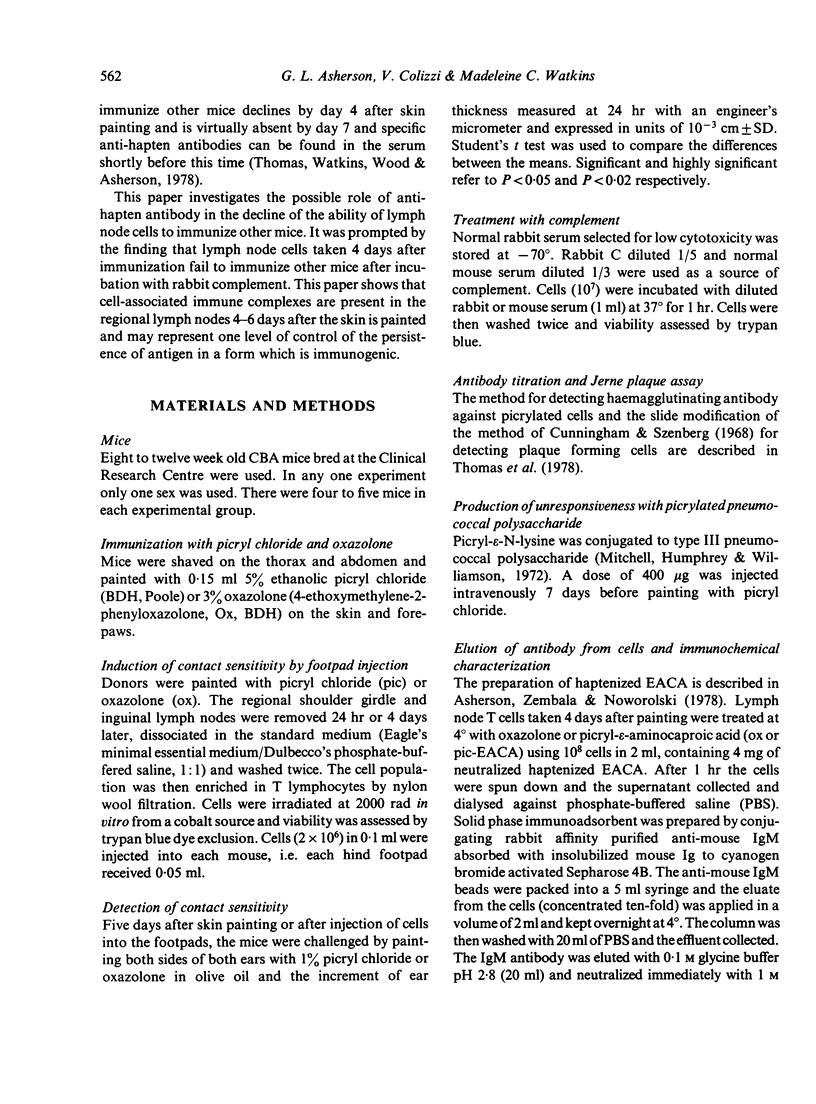
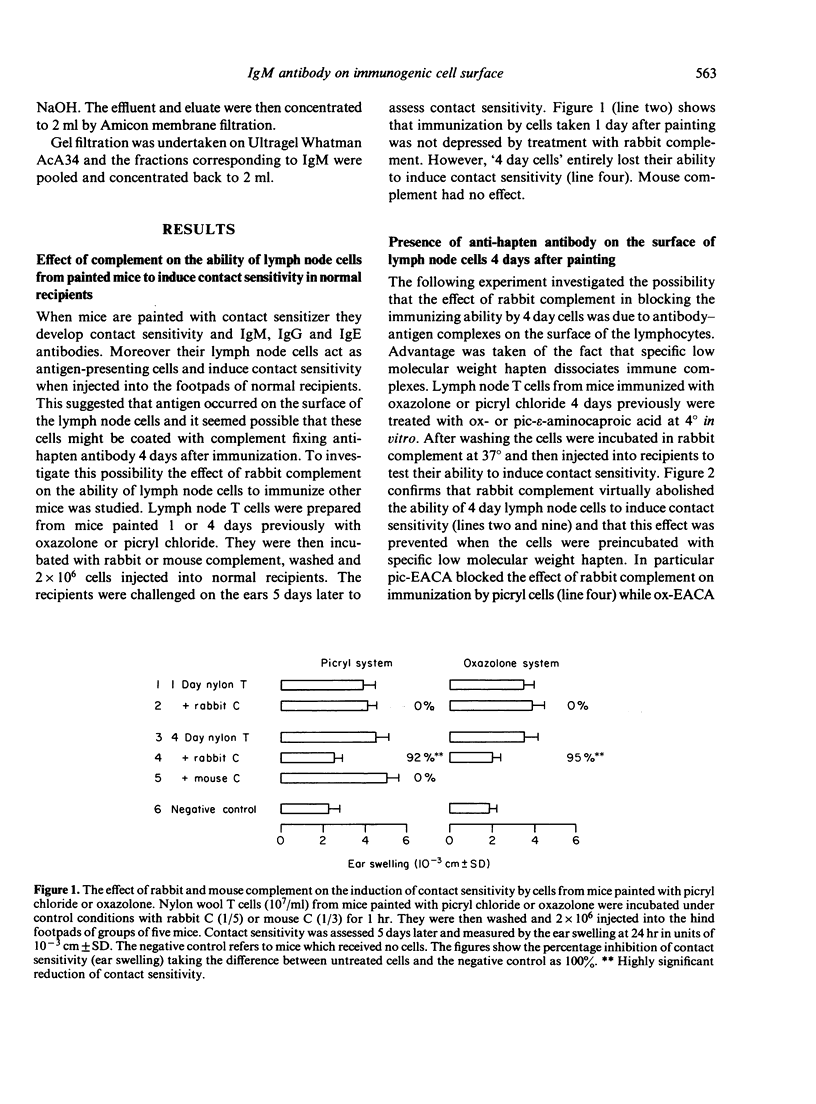
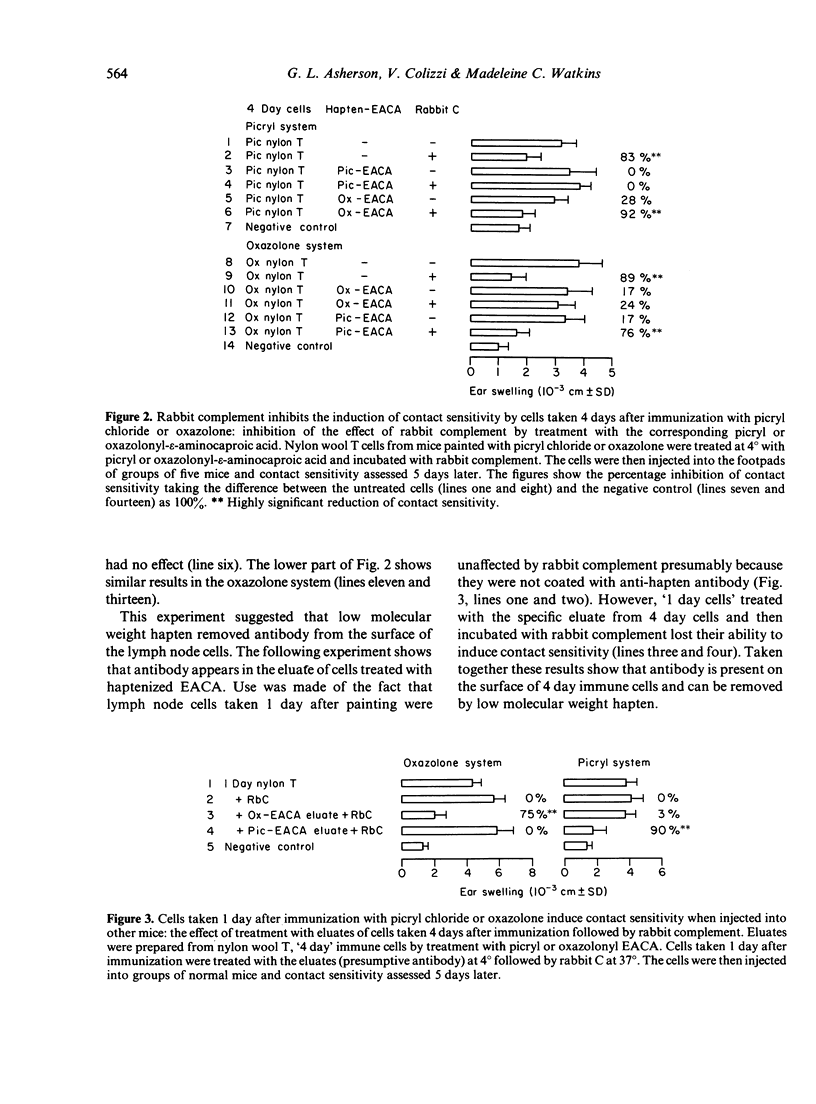
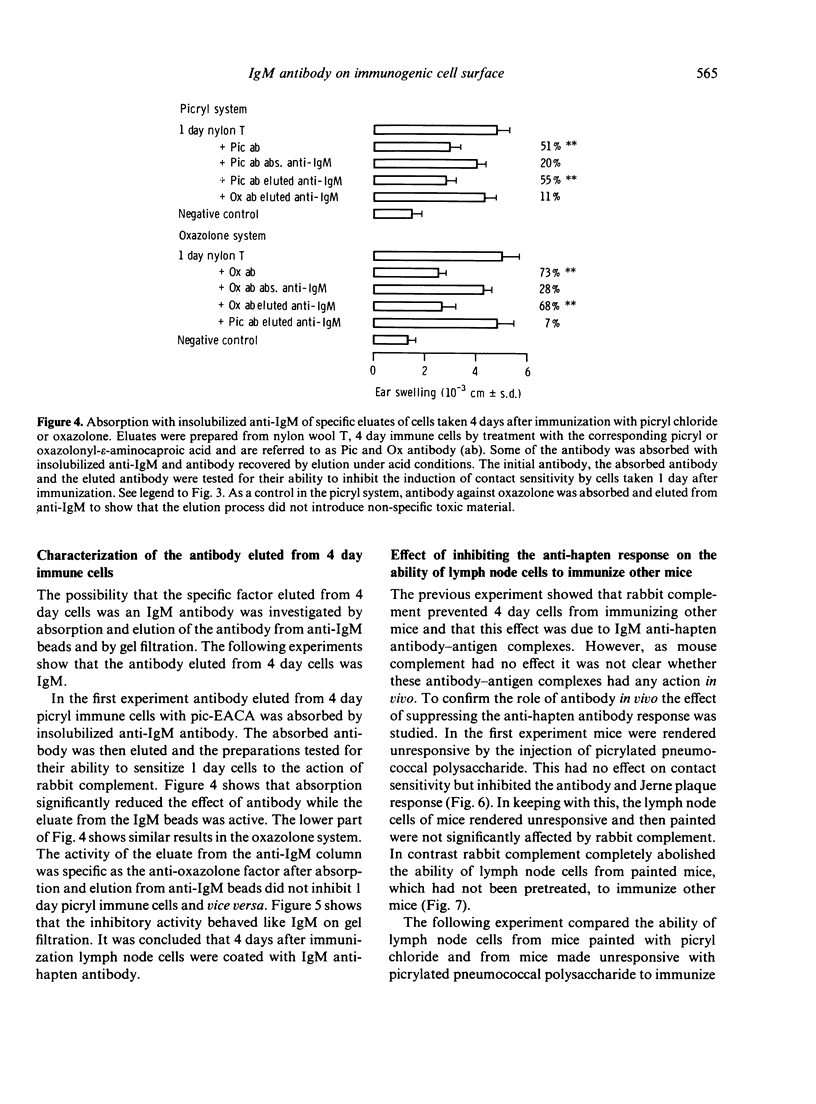
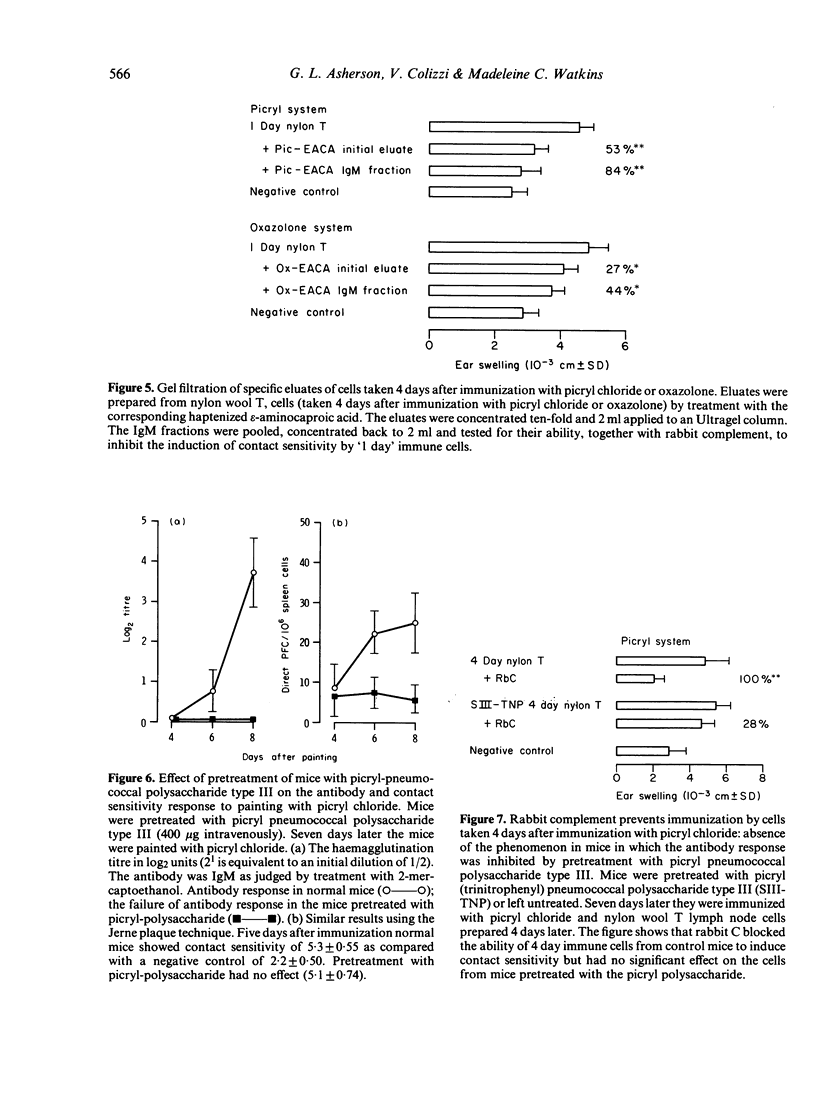

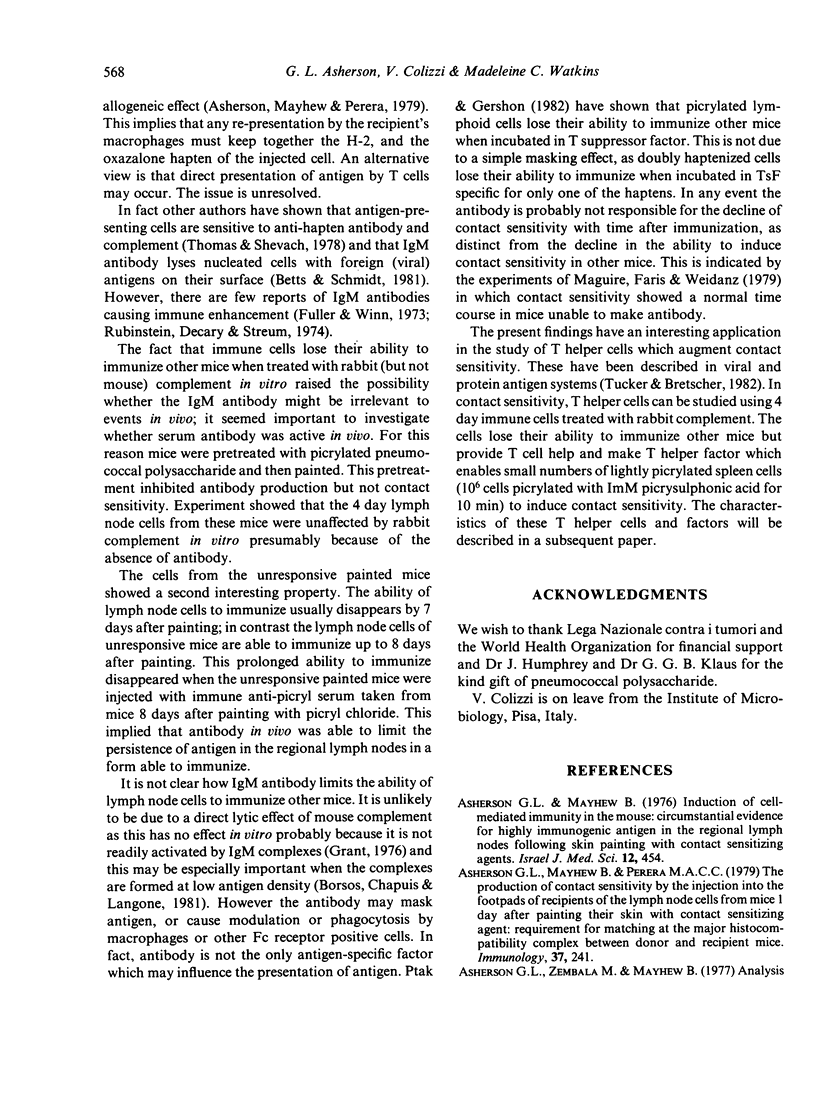
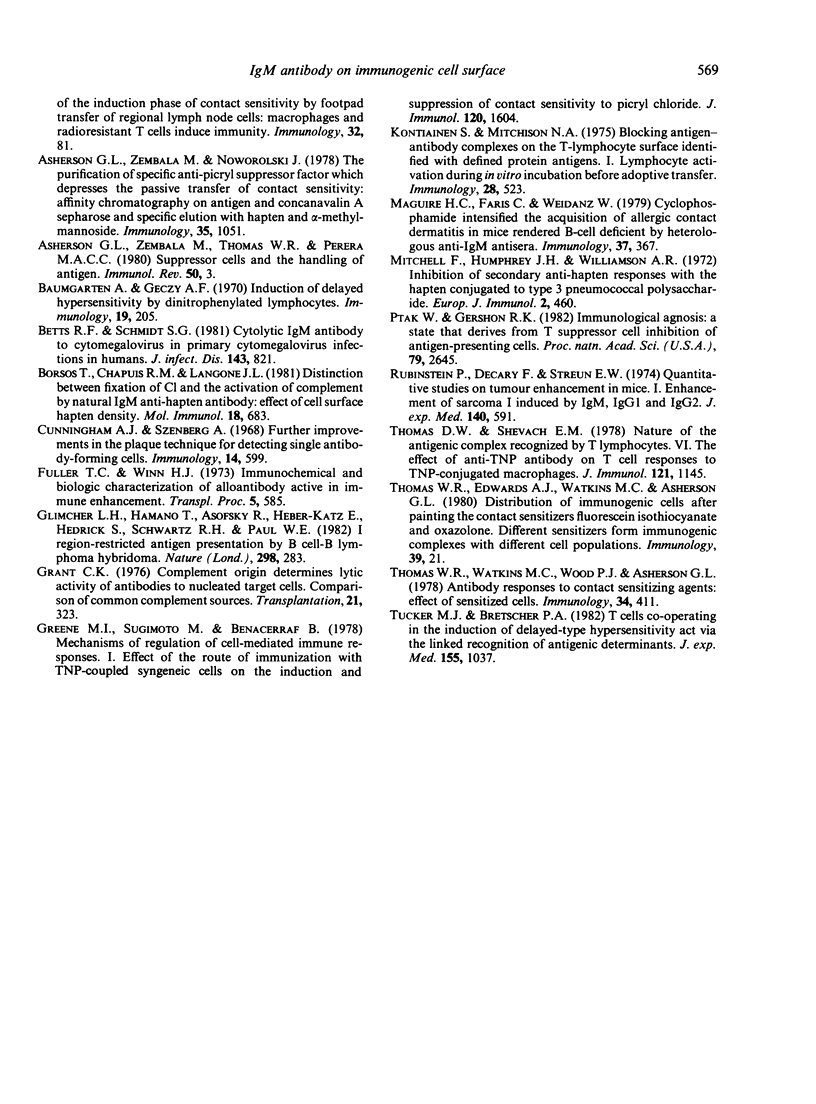
Selected References
These references are in PubMed. This may not be the complete list of references from this article.
- Asherson G. L., Mayhew B. Induction of cell-mediated immunity in the mouse: circumstantial evidence for highly immunogenic antigen in the regional lymph nodes following skin painting with contact sensitizing agents. Isr J Med Sci. 1976 Apr-May;12(4-5):454–467. [PubMed] [Google Scholar]
- Asherson G. L., Mayhew B., Perera M. A. The production of contact sensitivity by the injection into the footpads of recipients of the lymph node cells from mice 1 day after painting the skin with contact sensitizing agent: requirement for matching at the major histocompatibility complex between donor and recipient mice. Immunology. 1979 May;37(1):241–245. [PMC free article] [PubMed] [Google Scholar]
- Asherson G. L., Zembala M., Noworolski J. The purification of specific anti-picryl T suppressor factor which depresses the passive transfer of contact sensitivity: affinity chromatography on antigen and Concanavalin A sepharose and specific elution with hapten and alpha-methylmannoside. Immunology. 1978 Dec;35(6):1051–1056. [PMC free article] [PubMed] [Google Scholar]
- Asherson G. L., Zembala M., Thomas W. R., Perera M. A. Suppressor cells and the handling of antigen. Immunol Rev. 1980;50:3–45. doi: 10.1111/j.1600-065x.1980.tb00306.x. [DOI] [PubMed] [Google Scholar]
- Baumgarten A., Geczy A. F. Induction of delayed hypersensitivity by dinitrophenylated lymphocytes. Immunology. 1970 Aug;19(2):205–217. [PMC free article] [PubMed] [Google Scholar]
- Betts R. F., Schmidt S. G. Cytolytic IgM antibody to cytomegalovirus in primary cytomegalovirus infection in humans. J Infect Dis. 1981 Jun;143(6):821–826. doi: 10.1093/infdis/143.6.821. [DOI] [PubMed] [Google Scholar]
- Cunningham A. J., Szenberg A. Further improvements in the plaque technique for detecting single antibody-forming cells. Immunology. 1968 Apr;14(4):599–600. [PMC free article] [PubMed] [Google Scholar]
- Feldmann R. J., Potter M., Glaudemans C. P. A hypothetical space-filling model of the V-regions of the galactan-binding myeloma immunoglobulin J539. Mol Immunol. 1981 Aug;18(8):683–698. doi: 10.1016/0161-5890(81)90060-2. [DOI] [PubMed] [Google Scholar]
- Fuller T. C., Winn H. J. Immunochemical and biologic characterization of alloantibody active in immunologic enhancement. Transplant Proc. 1973 Mar;5(1):585–587. [PubMed] [Google Scholar]
- Glimcher L. H., Hamano T., Asofsky R., Herber-Katz E., Hedrick S., Schwartz R. H., Paul W. E. I region-restricted antigen presentation by B cell-B lymphoma hybridomas. Nature. 1982 Jul 15;298(5871):283–284. doi: 10.1038/298283a0. [DOI] [PubMed] [Google Scholar]
- Grant C. K. Complement origin determines lytic activity of antibodies to nucleated target cells. Comparison of common complement sources. Transplantation. 1976 Apr;21(4):323–330. doi: 10.1097/00007890-197604000-00009. [DOI] [PubMed] [Google Scholar]
- Greene M. I., Sugimoto M., Benacerraf B. Mechanisms of regulation of cell-mediated immune responses. I. Effect of the route of immunization with TNP-coupled syngeneic cells on the induction and suppression of contact sensitivity to picryl chloride. J Immunol. 1978 May;120(5):1604–1611. [PubMed] [Google Scholar]
- Kontiainen S., Mitchison N. A. Blocking antigen-antibody complexes on the T-lymphocyte activation during in vitro incubation before adoptive transfer. Immunology. 1975 Mar;28(3):523–533. [PMC free article] [PubMed] [Google Scholar]
- Maguire H. C., Jr, Faris L., Weidanz W. Cyclophosphamide intensifies the acquisition of allergic contact dermatitis in mice rendered B-cell deficient by heterologous anti-IgM antisera. Immunology. 1979 Jun;37(2):367–372. [PMC free article] [PubMed] [Google Scholar]
- Mitchell G. F., Humphrey J. H., Wiliamson A. R. Inhibition of secondary anti-hapten responses with the hapten conjugated to type 3 pneumococcal polysaccharide. Eur J Immunol. 1972 Oct;2(5):460–467. doi: 10.1002/eji.1830020516. [DOI] [PubMed] [Google Scholar]
- Ptak W., Gershon R. K. Immunological agnosis: a state that derives from T suppressor cell inhibition of antigen-presenting cells. Proc Natl Acad Sci U S A. 1982 Apr;79(8):2645–2648. doi: 10.1073/pnas.79.8.2645. [DOI] [PMC free article] [PubMed] [Google Scholar]
- Rubinstein P., Decary F., Streun E. W. Quantitative studies on tumor enhancement in mice. I. Enhancement of sarcoma I induced by IgM, IgG1, and IgG2. J Exp Med. 1974 Aug 1;140(2):591–596. doi: 10.1084/jem.140.2.591. [DOI] [PMC free article] [PubMed] [Google Scholar]
- Thomas D. W., Shevach E. M. Nature of the antigenic complex recognized by T lymphocytes. VI. The effect of anti-TNP antibody on T cell responses to TNP-conjugated macrophages. J Immunol. 1978 Sep;121(3):1145–1151. [PubMed] [Google Scholar]
- Thomas W. R., Watkins M. C., Wood P. J., Asherson G. L. Antibody responses to contact sensitizing agents. Effect of sensitized cells. Immunology. 1978 Mar;34(3):411–417. [PMC free article] [PubMed] [Google Scholar]
- Tucker M. J., Bretscher P. A. T cells cooperating in the induction of delayed-type hypersensitivity act via the linked recognition of antigenic determinants. J Exp Med. 1982 Apr 1;155(4):1037–1049. doi: 10.1084/jem.155.4.1037. [DOI] [PMC free article] [PubMed] [Google Scholar]


